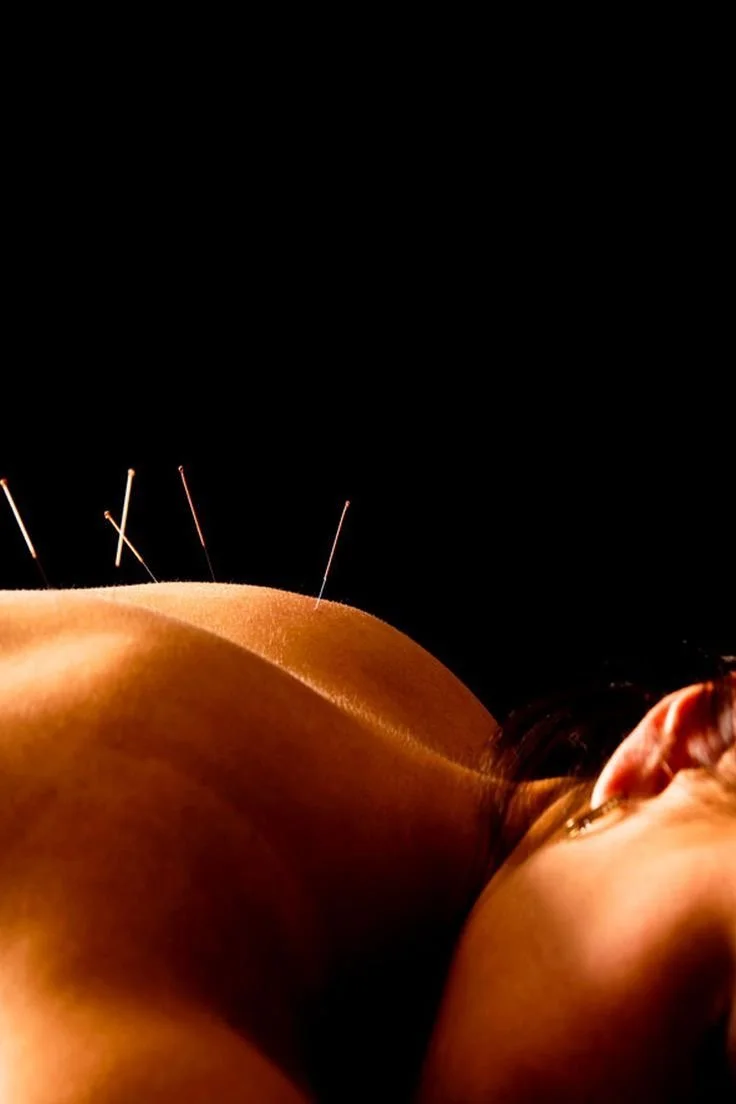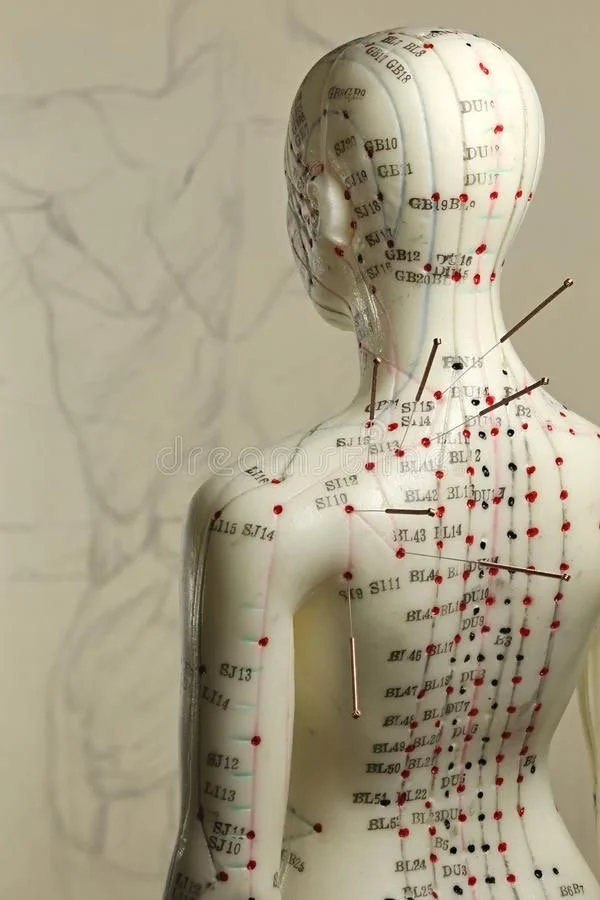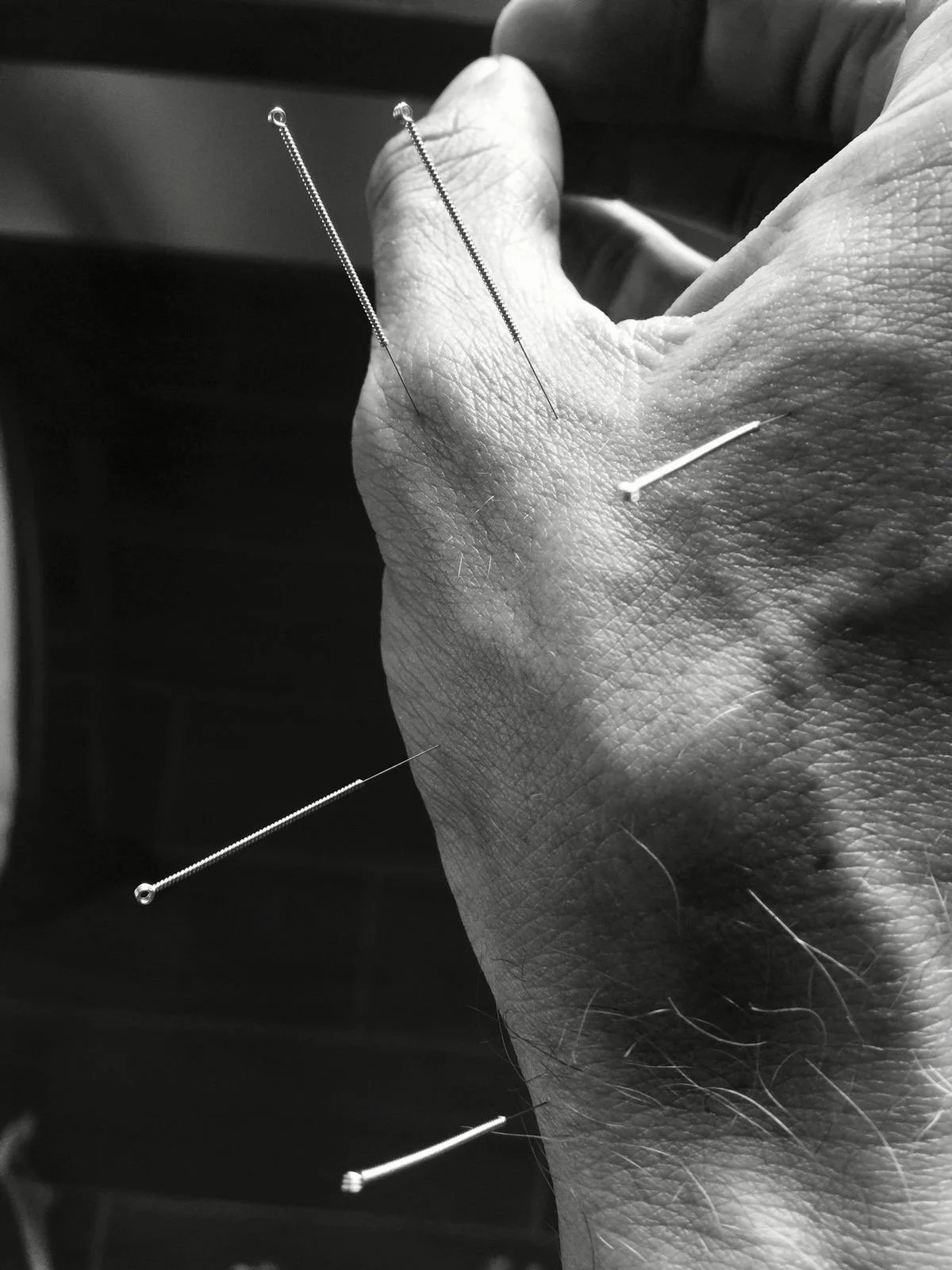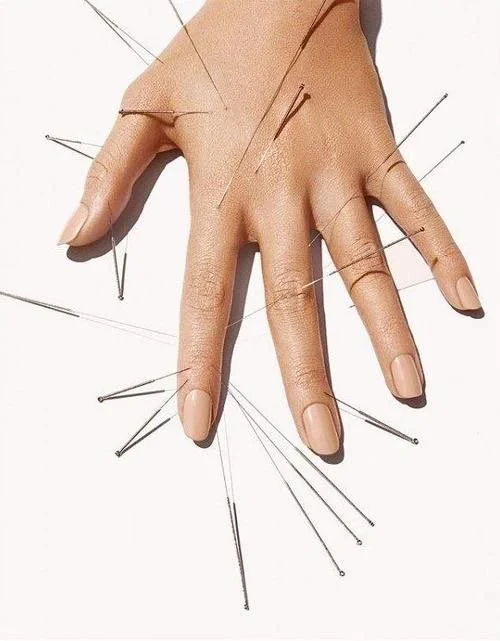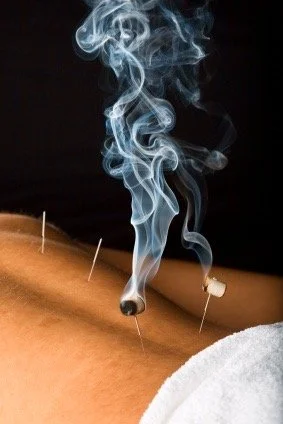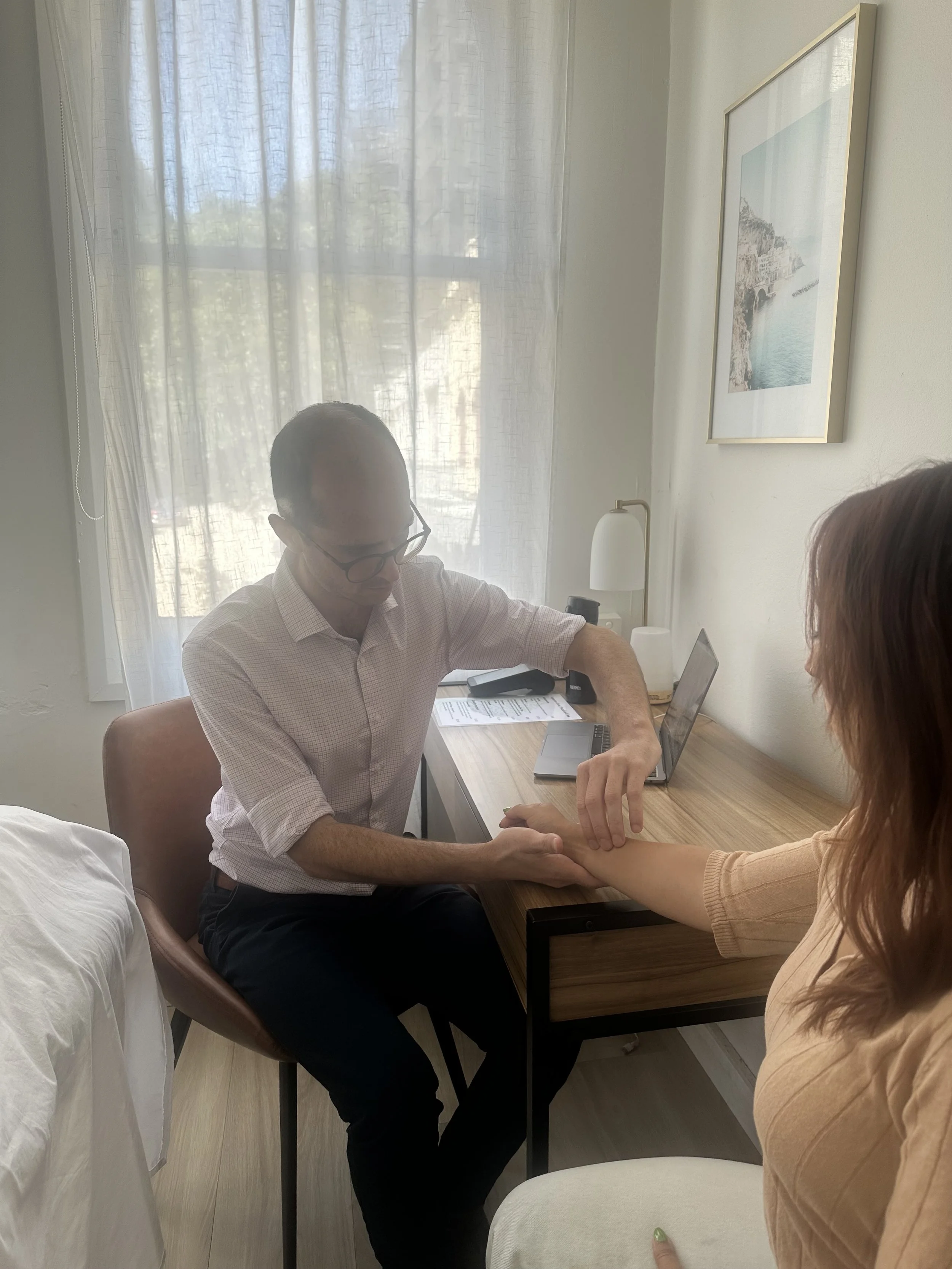Dry Needling vs Acupuncture: Understanding the Real Differences Beyond the Needle
If you've ever researched treatment options for muscle pain or sports injuries, you've probably come across both dry needling and acupuncture. There’s a lot of confusion about the differences between these two.
While both modalities use the same type of needles, there are important differences in their theoretical foundations, scope of practice, and most critically, the training and expertise of the practitioners who perform them. Understanding these distinctions is essential for making informed decisions about your healthcare and getting the results you're looking for.
Historical Origins & Theoretical Foundations
Dry Needling's Recent Development
Dry needling has a relatively short history compared to acupuncture. It evolved from research conducted in the 1940s by Dr. Janet Travell, who would later become President John F. Kennedy's personal physician. Initially, researchers were injecting painful areas with anaesthetic substances, but they eventually discovered something remarkable: using hypodermic needles without any injectable substance produced similar pain-relieving results. The term "dry needling" was adopted to distinguish this technique from injections that use liquid substances.
The theoretical foundation of dry needling is rooted firmly in Western medicine, specifically in anatomy, physiology, and myofascial trigger point theory. Trigger points are hyper-irritable spots within skeletal muscle tissue that tend to be tight and painful when pressed. These points can cause predictable patterns of referred pain and dysfunction throughout the body. When a needle activates a trigger point, it produces a twitch response that helps the muscle and surrounding fascia relax, reducing pain, improving range of motion, and increasing strength in the affected area.
Acupuncture's Ancient Roots
Acupuncture, by contrast, has been practiced for several thousand years across China and surrounding East Asian countries. It developed as a complete medical system used to treat all types of health complaints, not just musculoskeletal pain. The theoretical framework is based on traditional medical texts and centuries of clinical observation.
Rather than viewing the body through the lens of isolated anatomical structures, acupuncture traditionally conceptualises the body as an interconnected ecosystem. The primary focus is on regulating blood flow and physiological function to restore healthy balance throughout the body's systems. This perspective allows practitioners to address not just localised symptoms, but underlying patterns that may be contributing to dysfunction.
Interestingly, acupuncture has long recognised points similar to what we now call trigger points. In traditional practice, these are known as "ashi points"—a term that translates to "oh yes," referring to the involuntary vocalisation people make when these tender spots are pressed or when the characteristic twitch response is elicited. However, ashi points represent just one category within the much broader acupuncture point system.
Scope of Practice: What Each Approach Can Treat
Dry Needling's Limited Focus
Dry needling is specifically designed to address musculoskeletal complaints. Practitioners use it primarily for conditions such as neck pain, back pain, shoulder pain, headaches, sports injuries, repetitive strain injuries, and various joint problems from the elbow down to plantar fasciitis. The approach focuses on local tissue treatment—needling the area where you're experiencing pain or dysfunction.
This narrow focus can be effective for straightforward muscular issues, but it doesn't address other factors that might be contributing to your condition or preventing optimal recovery.
Acupuncture's Comprehensive Approach
Acupuncture encompasses everything dry needling does and much more. A trained acupuncturist can certainly work with trigger points and perform the same muscular release techniques used in dry needling. But they also have access to a much broader toolkit.
Acupuncturists can use distal points—meaning they might treat knee pain by needling points on your lower leg or even your arm, rather than directly at the painful site. This is particularly valuable when an area is too inflamed or sensitive for direct needling. This approach helps avoid aggravating already irritated tissues while still triggering a healing response that relieves pain, reduces inflammation, and improves movement and strength.
Beyond musculoskeletal conditions, acupuncture can address systemic issues that often accompany or contribute to pain and injury. Poor sleep affects tissue healing and pain perception. Digestive problems can impact inflammation levels. Chronic stress alters muscle tension patterns and slows recovery. An acupuncturist can incorporate points to help with these factors, treating you as a whole person rather than just addressing the site of injury. This comprehensive approach not only helps resolve your current complaint but also reduces the likelihood of future injuries and chronic pain patterns.
Training & Qualification: A Critical Difference
This is perhaps the most important distinction between the two modalities, and it's one that many people don't fully appreciate.
Dry Needling Certification
Dry needling courses can be completed over a single weekend. That's right—practitioners from various backgrounds (physiotherapists, chiropractors, massage therapists, and others) can add dry needling to their practice after just one or two days of training. While some practitioners go on to develop significant skill and experience with the technique, the baseline educational requirement is minimal.
The amount of hands-on needling practice varies considerably among dry needling practitioners. Some may use the technique regularly and become quite proficient, while others might incorporate it only occasionally, meaning their needling skills may not be as refined.
Acupuncture Education
Becoming a registered acupuncturist requires a minimum of a four-year bachelor's degree specifically in acupuncture or Chinese medicine. These programs involve hundreds of hours of supervised clinical training. Students practice needling techniques extensively before ever treating patients independently, and they continue refining these skills throughout their clinical internships.
The education doesn't stop at needling technique. Acupuncture students learn comprehensive diagnostic frameworks, point selection strategies, treatment planning, safety protocols, and when needling might not be appropriate. They study anatomy, physiology, pathology, and how to recognise conditions that require referral to other healthcare providers. After graduation, registered acupuncturists must maintain their credentials through continuing professional development and adhere to regulatory standards.
Why This Matters
Needling might seem simple—it's just a thin needle going into muscle, right? But proper technique matters enormously. The angle, depth, manipulation, and specific location of needle insertion all affect outcomes and safety. Knowing when to needle and, equally importantly, when not to needle requires clinical judgment that comes from extensive training and experience.
If you're going to have someone insert needles into your body, it makes sense to choose a practitioner who has undergone rigorous training and uses these techniques regularly as a core part of their practice.
Treatment Approach: Local vs. Whole-Body
The Dry Needling Model
Dry needling typically takes a direct, mechanical approach. If your shoulder hurts, the practitioner needles your shoulder muscles. The goal is to create a local twitch response that releases tension in the affected tissue. This perspective views pain primarily through the lens of muscular dysfunction and trigger point activity.
The Acupuncture Model
Acupuncture offers flexibility in treatment approach. When appropriate, an acupuncturist can absolutely use local needling techniques, including trigger point work. However, they also have the option to treat distally—using points away from the painful area to create therapeutic effects without risking aggravation of inflamed or hypersensitive tissues.
More importantly, acupuncturists can address contributing factors that exist beyond the immediate injury site. If you're not sleeping well, that affects tissue repair. If you're under significant stress, that changes your muscle tension patterns and pain perception. If your digestion is compromised, that can impact inflammation and healing capacity. An acupuncturist can incorporate treatment for these issues alongside addressing your primary complaint.
This whole-person approach doesn't just help resolve your current injury faster—it optimises your body's overall capacity for healing and recovery, reducing the likelihood that you'll develop chronic problems or experience repeated injuries.
Some modern acupuncturists will integrate multiple techniques within a single treatment: traditional acupuncture points, trigger point releases, motor point stimulation (which affects nerve-muscle connections), and electroacupuncture (which uses mild electrical stimulation to enhance therapeutic effects). This versatility allows treatment to be precisely tailored to your specific needs.
Making the Right Choice for Your Needs
When Dry Needling Might Be Appropriate
If you're dealing with a simple, localised muscle pain and you're seeing a highly experienced practitioner who uses dry needling regularly as a core component of their practice, dry needling might be perfectly adequate. Some physiotherapists and sports medicine practitioners have developed considerable skill with the technique and use it frequently enough to maintain proficiency.
The key is to ask about their experience level. How many patients do they treat with dry needling each week? How long have they been practicing the technique? Did they complete additional advanced training beyond the basic certification?
When to Choose an Acupuncturist
For most situations, seeking care from a registered acupuncturist makes sense. This is particularly true if you're dealing with a chronic condition, have multiple symptoms, want to address underlying health factors that might be affecting your recovery, or simply want the assurance that comes from seeing a practitioner with extensive needling training and experience.
Acupuncturists use needling as their primary therapeutic tool, often treating dozens of patients per week. This regular practice ensures their technique remains sharp and their clinical judgment stays refined. They're also trained to recognise when needling alone might not be sufficient and when integration with other approaches or referral to another provider would be beneficial.
The Best of Both Worlds
Here's what many people don't realise: a well-trained acupuncturist who has also studied myofascial trigger points can offer you the best of both approaches. They bring the depth of training, diagnostic sophistication, and whole-person perspective of traditional acupuncture, while also being able to apply targeted trigger point techniques when those are the most appropriate tool for your situation.
This flexibility means your practitioner can choose the most effective strategy for each treatment, rather than being limited to a single approach. Need aggressive trigger point release? They can do that. Need distal points to avoid aggravating an inflamed area? They can do that too. Need to address the stress and poor sleep that are impeding your recovery? That's also within their scope.
Some acupuncturists bring additional relevant training to their practice—such as backgrounds in remedial massage therapy, which provides deep understanding of muscular anatomy and hands-on treatment skills that complement needling techniques beautifully. These practitioners can integrate needling with soft tissue work, movement assessment, and rehabilitation advice for truly comprehensive care.
Finding a Practitioner Who Offers Both
If you're looking for treatment that combines the focused effectiveness of trigger point work with the comprehensive benefits of acupuncture, seek out a registered acupuncturist who has specific training and experience in myofascial trigger point therapy.
When researching practitioners, ask about their background. How long have they been practicing? Do they have complementary qualifications that enhance their needling work? How do they decide which techniques to use for different conditions? A practitioner who thoughtfully integrates multiple approaches and can explain their clinical reasoning is likely to provide excellent care.
Conclusion
While dry needling and acupuncture might use the same tools, they represent very different approaches to healthcare. Dry needling offers a narrow focus on muscular trigger points, while acupuncture provides a comprehensive system capable of addressing the whole person—including but extending far beyond musculoskeletal complaints.
The difference in practitioner training is substantial and directly impacts both safety and outcomes. A weekend course cannot replicate the depth of understanding and refinement of technique that comes from years of dedicated study and hundreds of hours of supervised clinical practice.
For the most effective care, seek out a registered acupuncturist who also understands myofascial trigger point work. This combination gives you access to both the focused muscle release techniques you might associate with dry needling and the sophisticated diagnostic and treatment capabilities that only comprehensive acupuncture training provides. You don't have to choose between approaches—you can benefit from both in the hands of a properly qualified practitioner.
About The Author: Gavin Martin-Rentz at Acupuncture Grove
Gavin is one of our acupuncturists at the Medicinal Collective in Bondi Junction. He brings together extensive acupuncture training with a background in remedial massage therapy. This combination allows him to work effectively with myofascial trigger points while drawing on the full scope of acupuncture practice. He regularly incorporates dry needling techniques into treatments when they're the right tool for the situation, but can also employ traditional acupuncture, electroacupuncture, moxibustion, cupping, guasha and herbal medicine depending on what will serve you best.
Located conveniently in Bondi Junction in Sydney's eastern suburbs, Acupuncture Grove offers a welcoming space where you'll receive care from someone who genuinely enjoys working with musculoskeletal conditions and has the training and experience to help you achieve your health goals.
Ready to Experience Comprehensive Needling Care?
If you’re looking to try acupuncture or dry needling in Bondi Junction, check out Gavin at Acupuncture Grove in the Medicinal Collective rooms.
Book your initial consultation at Acupuncture Grove today. The session includes an in-depth health consult, assessment of your body and your symptoms, acupuncture treatment and a treatment plan tailored to your individual needs.


